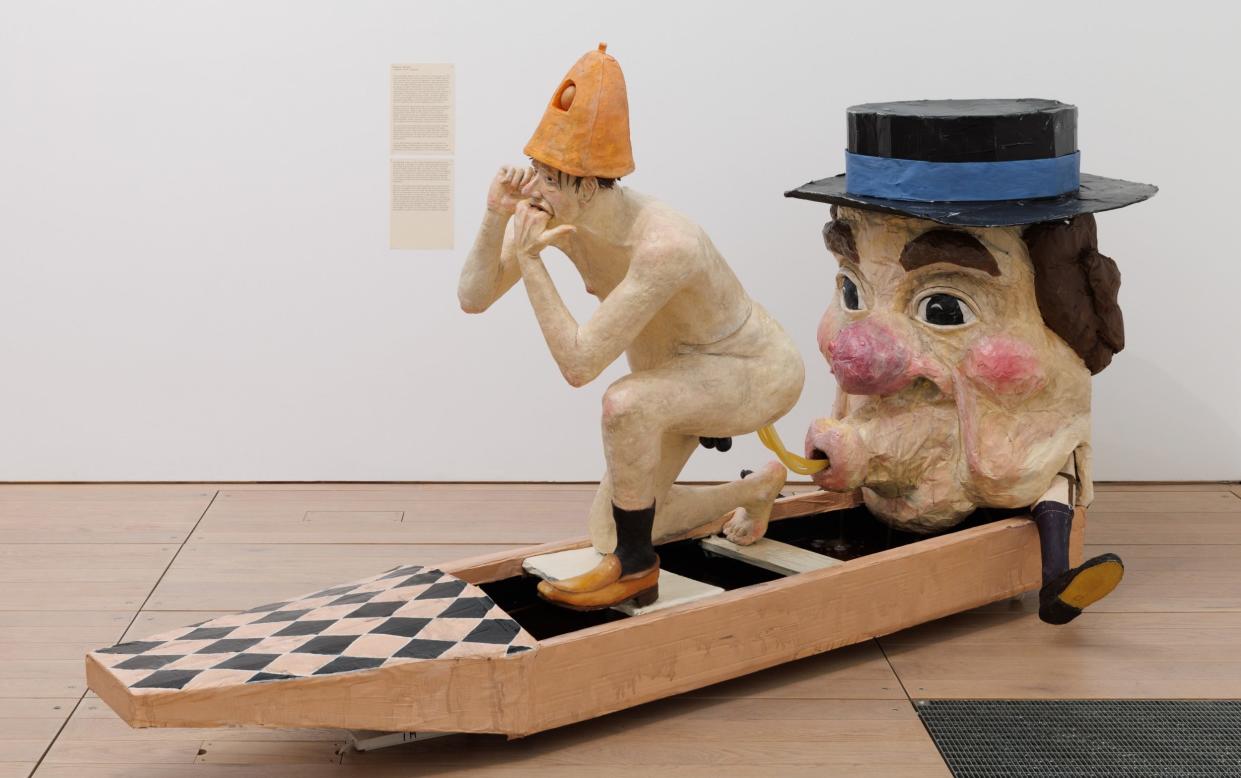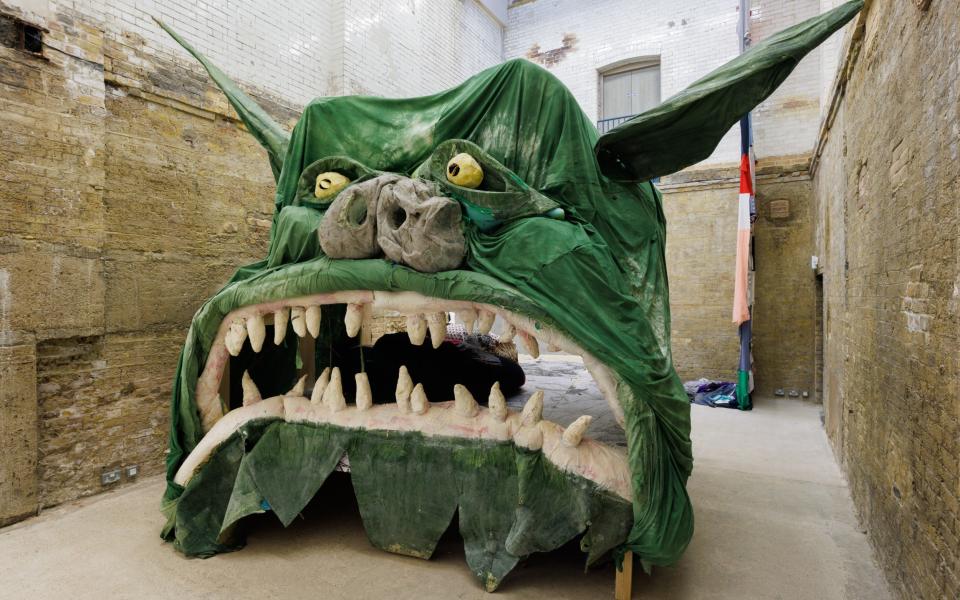Britain’s public monuments are about to get bright and rowdy (so says Goldsmiths)

Until recently, public statuary was something to which we’d grown indifferent. Then, in the summer of 2020, an effigy of the slaver Edward Colston was toppled in Bristol, and, overnight, it became a matter of urgent national debate.
Now, following this month’s acquittal of the so-called “Colston Four”, the Government is considering legislation to protect the statues that throng our streets. Only last week, a man with a hammer scaled the exterior of Broadcasting House and started smashing Eric Gill’s 1931 statue of Prospero and Ariel while shouting “paedophile” (a reference to the fact that the artist sexually abused his two eldest daughters). Yet doesn’t beautiful art transcend its maker’s dirty secrets?
This is the heated context for Testament, a new group show at Goldsmiths Centre for Contemporary Art in south-east London. The gallery’s director, Sarah McCrory, has reacted swiftly and fearlessly to events by inviting almost 50 artists to submit proposals suggesting what contemporary monuments should look like, given all the fuss engulfing public art. As well as established names, there are up-and-coming talents, including artist-of-the-moment Alvaro Barrington, who contributes a powerful piece, inspired by the lyrics of rapper Tupac Shakur, incorporating cymbals, cardboard packaging and cement.
Inevitably, for such a rapidly executed project, many of the works in Testament feel provisional: there are lots of sketches and half-formed thoughts. Think of this, though, as a stimulating “ideas laboratory”, not a finished show.
Unsurprisingly, perhaps, there isn’t a bronze statue in sight. Rather, via inversion and paradox, the artists challenge the purpose and appearance of conventional monuments. Instead of something permanent, Ghislaine Leung, for instance, offers a large inflatable pub: a boozy bouncy-castle for the lawn of 10 Downing Street, perhaps. Edward Thomasson invites us not to look up to what’s atop a plinth, but down into an imaginary sinkhole’s “gaping” depths. Jeremy Deller, too, invokes an “apparently bottomless sinkhole” as an appropriately contemporary monumental form, in a series of proposals for various challenging concepts – including, most simply and movingly, a “Tomb of the Unknown Refugee”.

Monuments, of course, are supposed to memorialise their subjects. Yet Lawrence Lek’s video Nepenthe, featuring a numbingly empty virtual world, is named after the drug of forgetfulness in ancient Greek mythology. In fact, oblivion becomes a sort of motif. Elizabeth Price suggests a shroud-like covering to obscure whatever’s underneath – “half-erased,” as she puts it, “but never eradicated”.
There’s a lot of silliness and satire, such as Monster Chetwynd’s sprawling, festive monument to “nonsense”, but much sincerity too. According to a short, shocking text, Phyllida Barlow’s bulging, semi-abstract humanoid form may “honour” a woman stoned to death for adultery in Iran. Suddenly that flash of pink, beneath a black, burka-like sheath, makes terrible sense.
Several submissions, some including placards, summon up public protest. Environmental concerns provide another theme. Scott King presents his concept of “total floralisation” – transforming urban space into a “giant garden”. As well as recrimination about our past, then, there are utopian ideas for the future. “Let’s Start Again” is inscribed across a large, Gaudí-like gate proposed by Laure Prouvost.
At some point, the discussion over what form a Covid memorial should take is going to heat up. My advice to its commissioners would be to listen to artist Ryan Gander, who’s represented in Testament by a sculpture of a sleeping tabby curled upon a plinth. Today, he argues, it’s no longer enough for public art merely to occupy communal space; rather, in some way, it must be “art for the public”, engaging, even participatory – and not top-down, which has been the traditional approach.
Until April 3. Info: goldsmithscca.art

